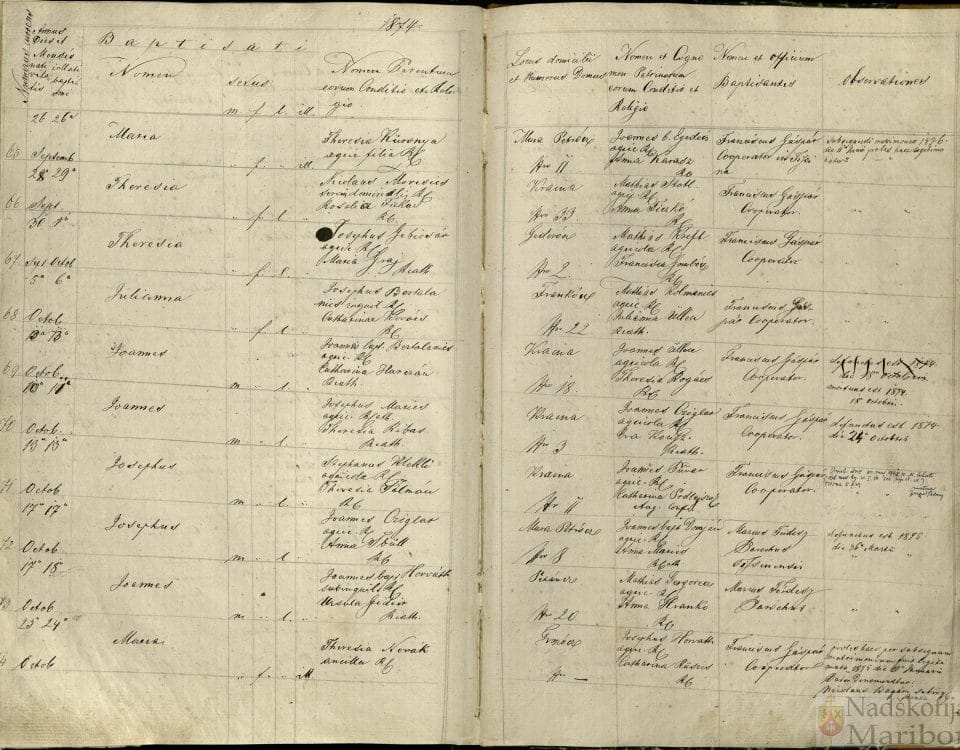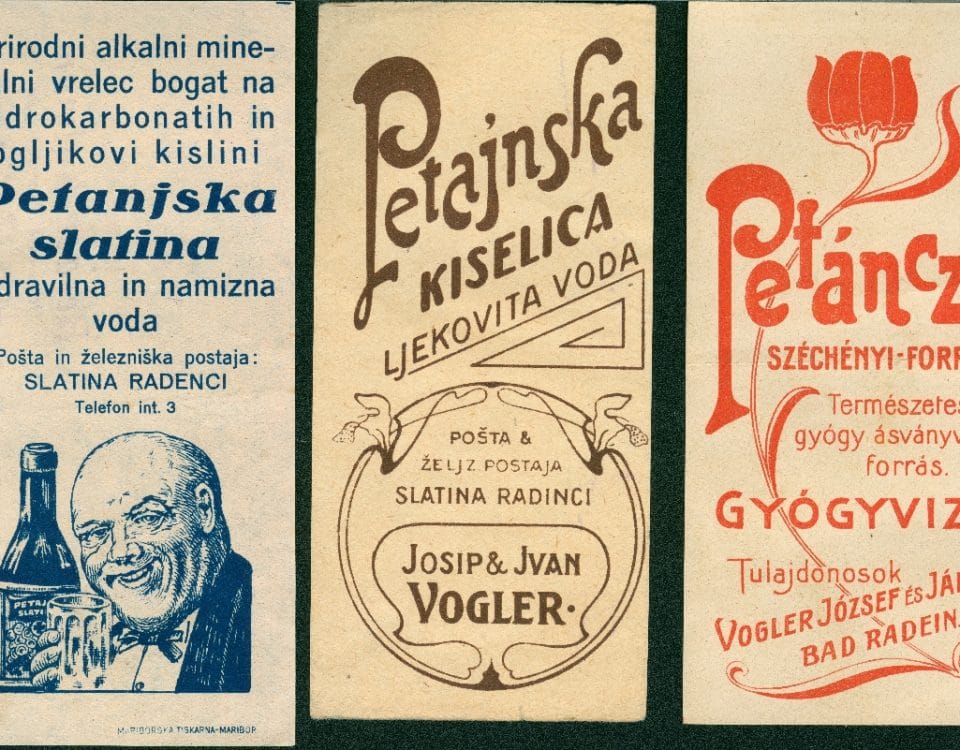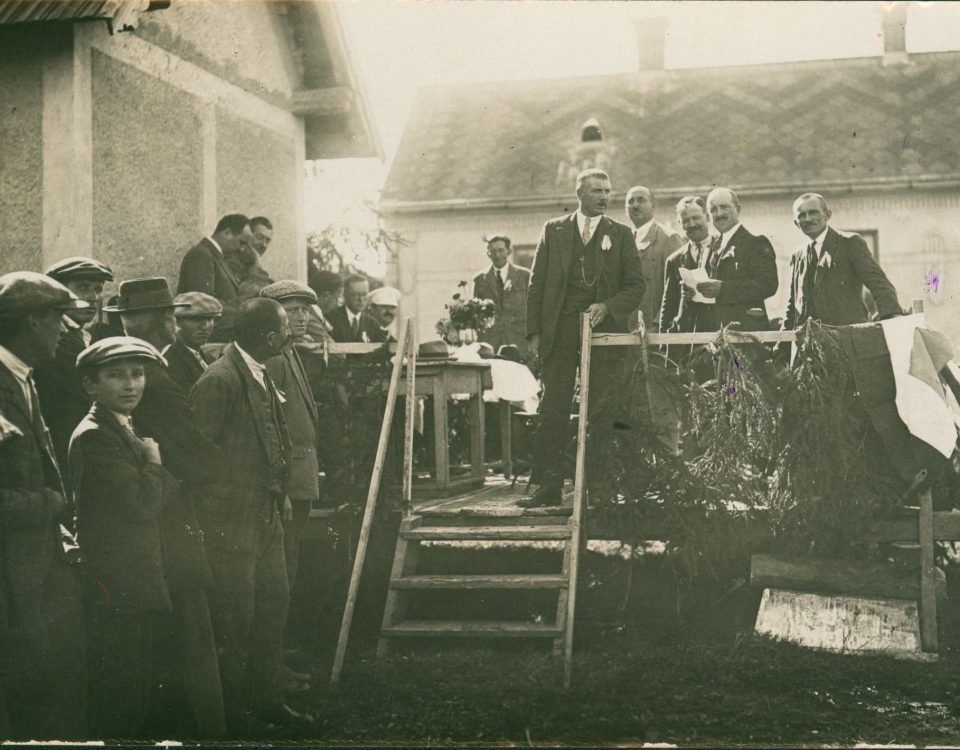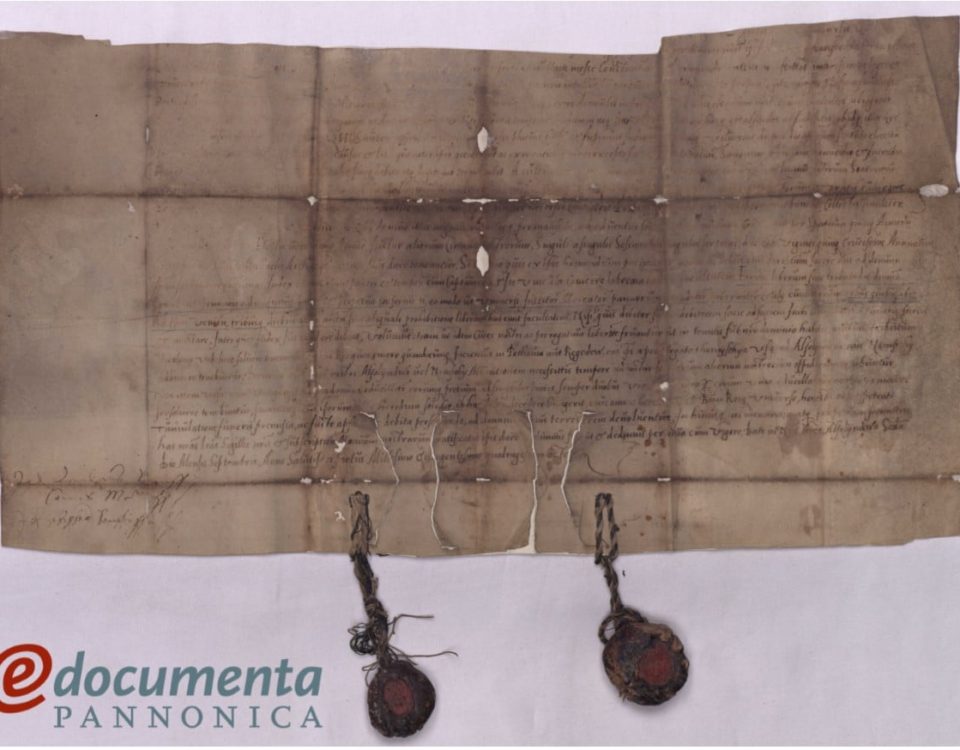Review of documented digitizers
11. February, 2020
Danijel Halas was born on June 24, 1908 in Crenšovci. After graduating from the high school in Ljubljana, he studied theology in Maribor, where he was ordained a priest on July 9, 1933. A week later, he delivered his first Mass at his birthplace. He first served as a chaplain in Ljutomer. After four years…
11. February, 2020
Starting from the Modern Age, pastors have kept baptismal/birth, marriage, and death registers in which their church members' birth, marriage, and death records were registered. On October 13, 1874, the birth of József Klekl (1874-1948) was registered in the birth register of Tišina parish. József Klekl was a priest, politician, and intellectual, born on October…
11. February, 2020
More than 3,000 residents of the Prekmurje region have not returned from World War I. Relatives often received only the death reports from the Red Cross. Such letter was also received by Janez Šlošarik's family in Alsólakos in July 1916. The Red Cross stated in the announcement that they did not know which regiment Šlošarik…
19. February, 2020
The use of the seals of the settlements was regulated by the Act XVIII of 1871 on the settlements governance. When the law was enacted, the sub-prefect offices collected all the old typariums and placed them for preservation in the county archives. On these seals the settlements displayed their old, almost forgotten symbols.
11. February, 2020
Although the locals had been using the water from the Petanjci spring, its value was first recognized by Professor Jožef Vogler, a biologist, teacher and politician from Szentlászló. Vogler's analysis revealed that the water is of very good quality, with high mineral and carbon dioxide content. Investing his own assets he established a company and…
11. February, 2020
The photographs show the Church of the Holy Cross in Črenšovci. The photographer took both pictures from the Lendava- Murska Sobota main road. In 1935, when the pictures were taken, this road was still a dirt road. In the background you can see some houses that were already standing at that time. One picture shows…
11. February, 2020
On April 10, 1925, the nave of the old Gothic church in the village of Sveti Jurij was demolished, but the chancel and the belfry were preserved. The plans for the new church were made by the Austrian architect Hans Pascher. The new St. George's Church was consecrated on September 15, 1929 by the then…
11. February, 2020
In Bogojina, in 1925, the construction of a new church began based on the plans of the architect Jože Plečnik. The original plan was to demolish the 14th-century old church because it proved too small for the congregation. Plečnik designed a new church, which he later modified, thus making the old church part of the…
11. February, 2020
On September 29, 1930, the Murska Sobota Agricultural Breeding Section organized an exhibition of Simmental cattle in Puconci. The animals were judged and rewarded at the exhibition – they received a prize or gift for the best breeding animal. In Puconci the first prize was awarded to Stefan Kühar's cow.
11. February, 2020
The sweep well, or in Prekmurje dialect: “stüdenec na čigo”, is still a feature of the Pannonian plain and Hungary, and in the past it was also of the Prekmurje Region. It is characterized by the "čiga" (pulley), and a boom acting as a hoist on a forked upright piece dug into the ground. At…
11. February, 2020
Between September 7 and 9, 1935, a federal-level cattle exhibition of the speckled cattle was held in Murska Sobota. City, Banat and State representatives of civil and military authorities attended the exhibition. After judging the cows (Vera became the winner, its owner was Petar Gjerkes from Lutverca) and judging the bulls (the winner was Karold,…
1. April, 2020
In the area returned in 1941 to Hungary, the Hungarian administration considered it important to support the institutions. The Battyándi kindergarten was transformed into a day-care center. The offer of István Szraka, a carpenter, master builder of Muraszombat, was accepted for masonry works while István Zselezen’s offer was accepted for furnitures. Based on the plans…
18. February, 2020
The use of the seals of the settlements was regulated by the Act XVIII of 1871 on the settlements governance. When the law was enacted, the sub-prefect offices collected all the old typariums and placed them for preservation in the county archives. On these seals the settlements displayed their old, almost forgotten symbols.
11. February, 2020
On the postcard it can be seen the main street Panonska from the direction of Lendava-Murska Sobota. At the end of the street, to the left, there is a two-story house, the Zvezda restaurant, which still operates today. There is a wooden mill on the right side of the street (the building has been demolished…
11. February, 2020
The postcard of Kobilje was issued by the Hungarian authorities during World War II. The postcard shows four motifs: St. Martin's Church, the school, the parish and the mill at Kobilje Creek. An inscription next to the mill indicates that there was a bathing place as well.
11. February, 2020
The postcard shows a street in Puconci before 1927. The building on the left, in front of which local people are standing, is the Kuhar restaurant, which is still operating. It was opened in 1904 when the former “Pavlič” restaurant was renovated and expanded. Next to the restaurant was the Bukvič grocery. On the right…
11. February, 2020
The Lendava Football Club was founded on May 11, 1903. The first friendly match was played on August 3, 1913. The first stake match was in 1920 in Murska Sobota, where the players arrived by a horse-drawn carriage. In 1935, the club got a real football field, playing in the meadow opposite the umbrella factory.…
11. February, 2020
The Catholic school was built in Pečarovci in 1816. The Lutheran children went to school in Puconci. Until 1879, the language of education was the Prekmurje dialect, then the Hungarian, except the religious education. In 1922, the Lutherans also founded their own school, which was closed in 1926, the students transferred to the Catholic school.…
11. February, 2020
The inhabitants of Turnišče never considered themselves ordinary villagers. Even today they call themselves “Varašanci”. The word comes from the Hungarian word for “market town”. According to Dr. Andrej Hozjan, Turnišče was probably given the rank of a market town as early as in the 16th century. PAM holds a letter of privilege dated September…
18. February, 2020
The section of the Rába River below Ivánc and Csákány is geographically the place where the river moves from the southern edge of the wide valley to its northern edge. The two streams running parallel to it: Down to Csákány, the Vörös Creek is on the left bank, while on the south side, down to…




















